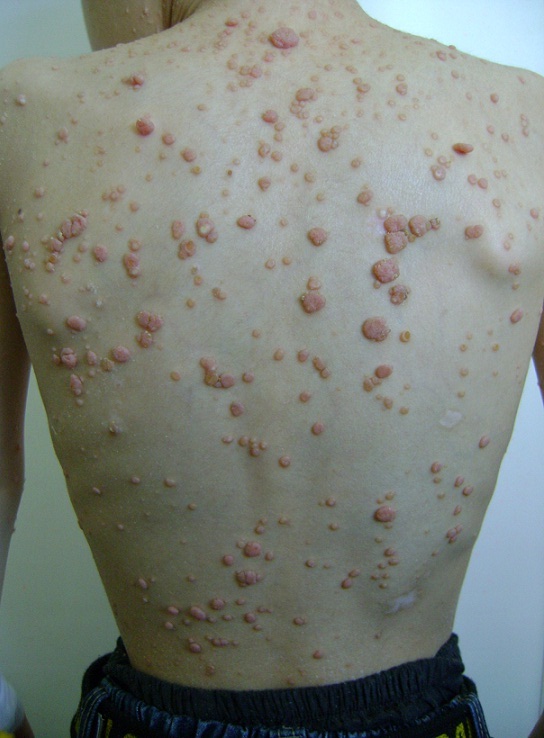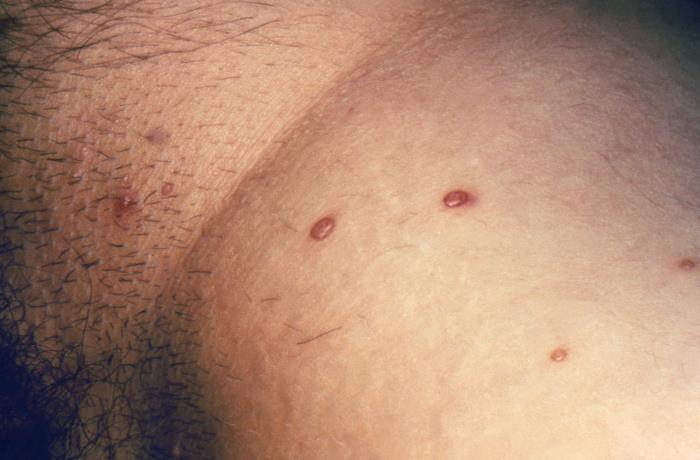Playlist
Show Playlist
Hide Playlist
Warts (Verruca Vulgaris) and Molluscum Contagiosum in Children
-
Slides WartsMolluscum Pediatrics.pdf
-
Download Lecture Overview
00:00 In this lecture, we will discuss Warts and Molluscum Contagiosum. So warts are a cutaneous infection by human papillomavirus. It's spread through skin-to-skin contact and through fomites. 00:17 Generally, in patients who have warts we call this verruca vulgaris. These are common warts. 00:25 They can occur on the hands, the fingers, the elbows or at the periungual areas. We also can see sometimes patients with verruca plana. These are called flesh warts. They are more flat, flesh-colored, pink and you can see an example of one right here. So warts are generally asymptomatic, they don't hurt, they don't bother the patient at all and they, over many years, will undergo spontaneous resolution. However, people usually don't enjoy having warts especially on their hands or if they're cosmetically troubling or sometimes they're painful and they need to be removed. To remove them, we will use salicylic acid which is a topical medicine that could be applied to the wart and patients can buy that on their own if they wish. Alternatively, patients can use cryotherapy with liquid nitrogen. You can do that in your office or there are purchasable freezing devices that you can use on warts at pharmacies. Another option that is becoming more popular and is very effective is the use of duct tape. Let me explain how duct tape is done. What you do is you cut out a piece of duct tape that's about the size of the wart and you put it over the wart and you leave it on for a week. If it falls off, replace it immediately. 01:48 So always have some duct tape around because they do sometimes fall off. Keep that on there and after a week you want to rub down that wart a little bit with a nail file or a pumice stone and then reapply it and do it for another week and then do that again and then do it for another week. After 3 weeks, more than 80% of these warts will be gone. Another special kind of wart is the plantar wart. Some advocate for debridement prior to topical therapy, others say that's not indicated. Others will provide only topical salicylate alone. Duct tape is hard to keep on feet because they're sweaty so you usually will go with one of these options. Another type of cutaneous viral infection is molluscum contagiosum. This is caused by a poxvirus. It also is spread through skin-to-skin contact and there are fomites. What's key about these lesions is their appearance. Your diagnosis is based on appearance alone. These are small skin-colored papules with a tiny little central umbilication which you can see on some of these lesions here. 02:59 They are between 2 and 8 mm long. Usually, they are multiple, they're in batches or they're widespread. They can appear all over your body. These are basically caused by the cytoplasmic inclusion in cells of the stratum granulosum and the stratum corneum. They tend to be a little bit eosinophilic and there are numerous virions within these molluscum bodies that you can see here on this picture but we do not usually make this diagnosis by biopsy. It's made by the appearance on the skin which is usually fairly reliable. So how do we treat molluscum contagiosum? These lesions may spontaneously disappear after 6 to 12 months or sometimes longer. These leaves families frustrated. Usually they're concerned about the appearance or they're concerned that other parents may not want their children to play because of a concern of infectious potential, which is truly there. So this can be frustrating for families but it's generally benign and it's going to go away on its own. In patients who have ruptured lesions or have scratched lesions, we generally will apply a little bit of topical antibacterial ointment until it heals over to prevent any secondary infection. If the lesions are particularly concerning, you can do cryotherapy or freezing of these lesions but this tends to be painful, so we really need to rely on older children who can sort of sit through the experience. Also, we want to tell families to avoid sharing towels, sheets, or anything like that so that we can limit the shed of the virus to other people. So let's go through a few things to remember from this lecture. The HPV virus causes warts. Verruca vulgaris is the name for common warts and verruca plana is those flesh warts we talked about. A poxvirus causes molluscum contagiosum and molluscum bodies are cytoplasmic inclusion bodies that are diagnostically specific but we don't usually do biopsies on these patients. We recognize it clinically as 2 to 8 mm lesions with central umbilication that are generally diffusely spread. Thanks for paying attention.
About the Lecture
The lecture Warts (Verruca Vulgaris) and Molluscum Contagiosum in Children by Brian Alverson, MD is from the course Pediatric Dermatology. It contains the following chapters:
- Warts
- Molluscum Contagiosum
Included Quiz Questions
Which of the following is an optimal therapy for verruca vulgaris in children?
- Duct tape
- Elmer’s glue
- Topical steroids
- Topical antifungals
- Oral Benadryl
Where in the body are common warts typically seen?
- Hands, fingers, and periungual areas
- Trunk and genitals
- Face and back of the neck
- Scalp
- Palms and soles
Which of the following best describes the typical lesion in molluscum contagiosum?
- Skin colored papules with central umbilication
- Pink flat-topped papules
- Small skin-colored nodules with a rough surface
- A generalized postular rash
- Large ulcerative lesions with a raised edge
Customer reviews
5,0 of 5 stars
| 5 Stars |
|
1 |
| 4 Stars |
|
0 |
| 3 Stars |
|
0 |
| 2 Stars |
|
0 |
| 1 Star |
|
0 |
Excellent lecture as usual: clear explanations, good pictures, interesting remarks regarding therapy.





